*NURSING > EXAM REVIEW > Nurse 125 Final Exam Review Questions & Answers With Lengthy Rationales, Updated (All)
Nurse 125 Final Exam Review Questions & Answers With Lengthy Rationales, Updated
Document Content and Description Below
Nurse 125 Final Exam Review Questions & Answers With Lengthy Rationales, Updated-The nurse collects data from a client who has experienced an episode of chest pain. The client tells the nurse that the... chest pain started shortly after he started raking leaves but went away after he rested and took a nitroglyerin tablet. Which type of angina should the nurse recognize in the client's description? 1. Stable 2. Variant 3. Unstable 4. Intractable - 1. Stable angina, also called exertional angina, occurs during activities that involve exertion or emotional stress and is relieved by rest or nitroglycerin. It usually has a stable pattern of onset, duration, severity, and relieving factors. Variant angina, also called Prinzmetal or vasospastic angina, results from coronary artery spasm. It may occur when the client is at rest and may be associated with ST-segment elevation on electrocardiography. Unstable angina is also called preinfarction angina. It occurs with an unpredictable degree of exertion or emotion and increases in frequency, duration, and severity over time; it may not be relieved by nitroglycerin. Intractable angina is a chronic, incapacitating type of angina that is unresponsive to interventions. Which measures should the nurse implement in the immediate management of the care of a client experiencing angina? Select all that apply. 1. Administering oxygen 2. Assessing the client's pain 3. Administering nitroglycerin 4. Placing the client in a side-lying supine position 5. Helping the client identify anxiety-precipitating events or experiences - 1, 2, 3, The immediate management of care includes assessing the pain and instituting pain relief measures; administering nitroglycerin to dilate the coronary arteries, reduce oxygen requirements of the myocardium, and relieve chest pain; Administer oxygen by nasal cannula as prescribed; maintain bedrest in a semi-Fowler's position; monitor vital signs; obtain a 12-lead electrocardiogram; institute continuous cardiac monitoring; initiate an intravenous (IV) line. The nurse would always stay with the client. Following the acute episode and once the client is stabilized, the nurse would help the client identify angina-precipitating events; provide client instructions on management of the disorder, diet, and medications; and instruct the client to seek medical attention if pain persists after treatment. Which risk factors for a mycoardial infarction are modifiable? Select all that apply. 1. The client smokes four or five cigarettes a day. 2. The client reports a sedentary lifestyle. 3. The client is 5 feet 1 inch (155 cm) tall and weighs 232 lb (105 kg). 4. The client's blood pressure consistently ranges between 148/88 and 170/96 mm Hg 5. The client reports that her mother has a history of severely increased cholesterol levels that cannot be controlled with diet or medication. Submit - 1, 2, 3, 4, An MI occurs when myocardial tissue is abruptly and severely deprived of oxygen. Ischemia results and may lead to necrosis of myocardial tissue if blood flow is not restored. An MI can be caused by atherosclerosis and CAD. Hereditary factors are nonmodifiable. Modifiable risk factors are those that can be changed—for instance, smoking, hypertension, obesity, physical inactivity, impaired glucose intolerance, and stress. A client who is experiencing chest pain is brought to the emergency department by a family member. Assessing the client, the nurse obtains a description of the client's chest pain. Which information from the client causes the nurse to determine that the client's pain is most likely angina? 1. The pain is unrelieved by rest. 2. The pain is unrelieved by nitroglycerin. 3. The pain was precipitated by a stressful event. 4. The pain is accompanied by nausea, vomiting, diaphoresis, and dyspnea. - 3. Angina is characterized by substernal chest discomfort, often radiating to the left arm. It is usually precipitated by exertion or stress and is relieved by nitroglycerin or rest. Pain caused by an MI presents as substernal chest pressure and may radiate to the jaw, back, and left arm. It occurs without cause, primarily in the morning, and is unrelieved by rest or nitroglycerin; pain is relieved by opioids only. It is accompanied by nausea and vomiting, diaphoresis, dyspnea, dysrhythmias, fear and anxiety, pallor, cyanosis, and coolness of the extremities. [Show More]
Last updated: 10 months ago
Preview 4 out of 18 pages

Loading document previews ...
Buy this document to get the full access instantly
Instant Download Access after purchase
Buy NowInstant download
We Accept:

Reviews( 0 )
$15.50
Can't find what you want? Try our AI powered Search
Document information
Connected school, study & course
About the document
Uploaded On
Sep 13, 2024
Number of pages
18
Written in
Additional information
This document has been written for:
Uploaded
Sep 13, 2024
Downloads
0
Views
29


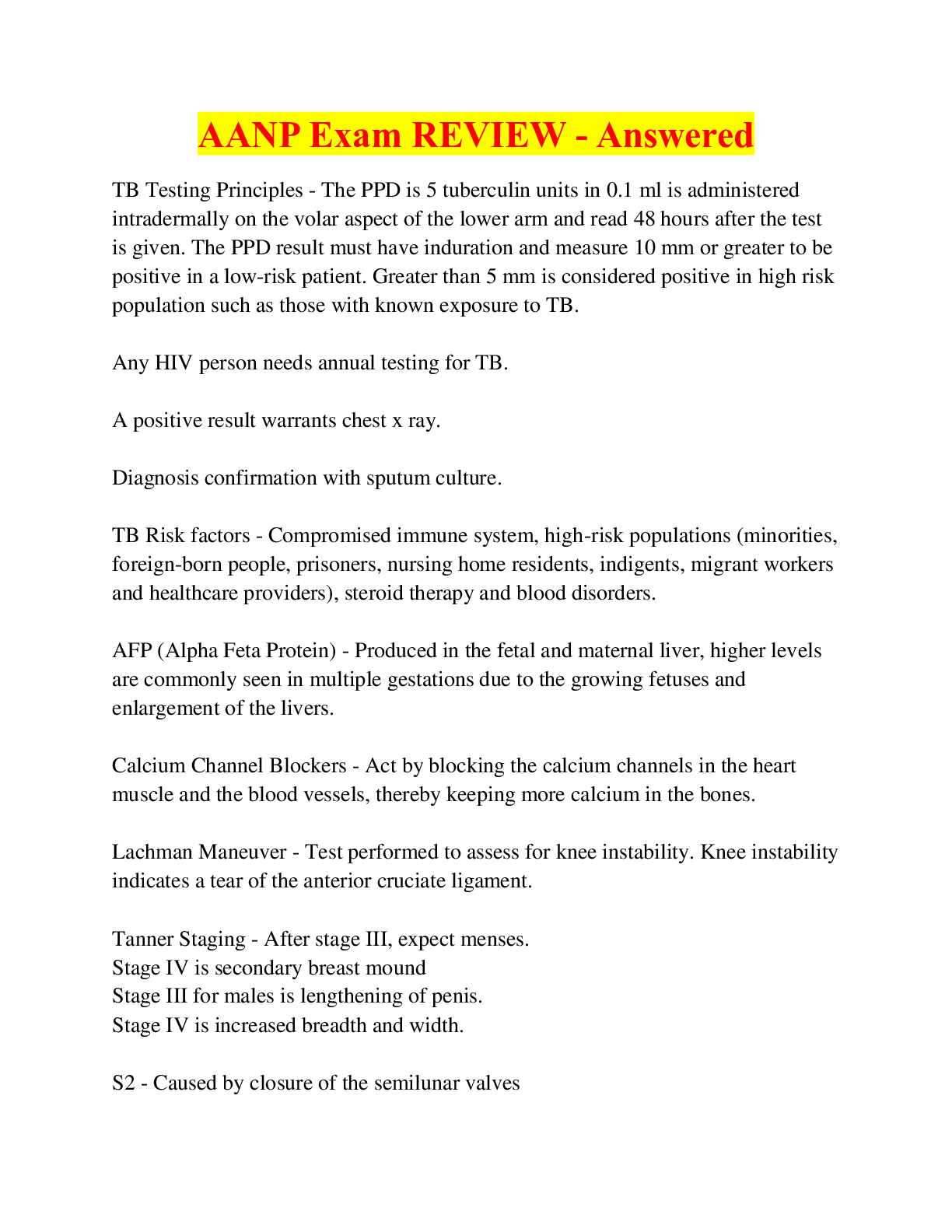
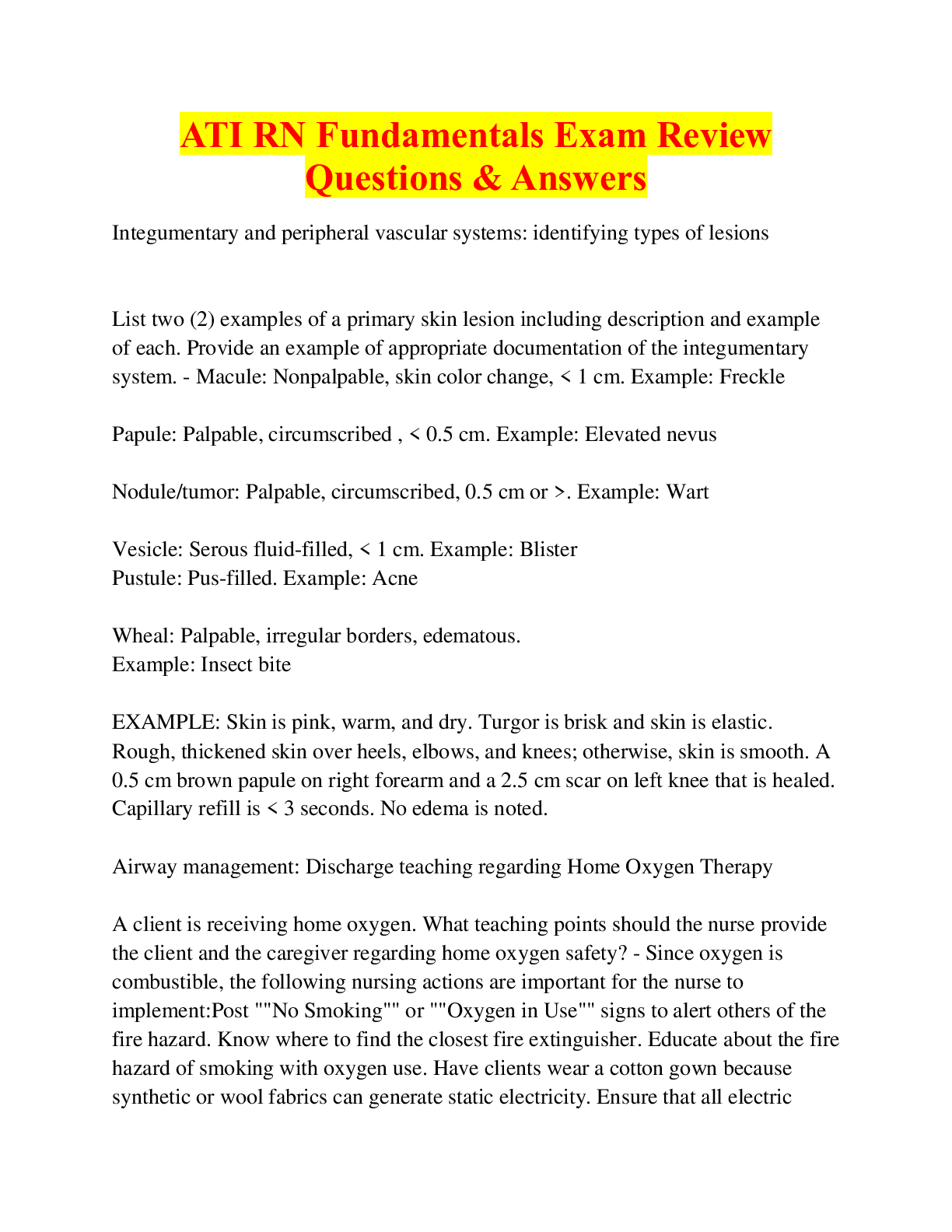
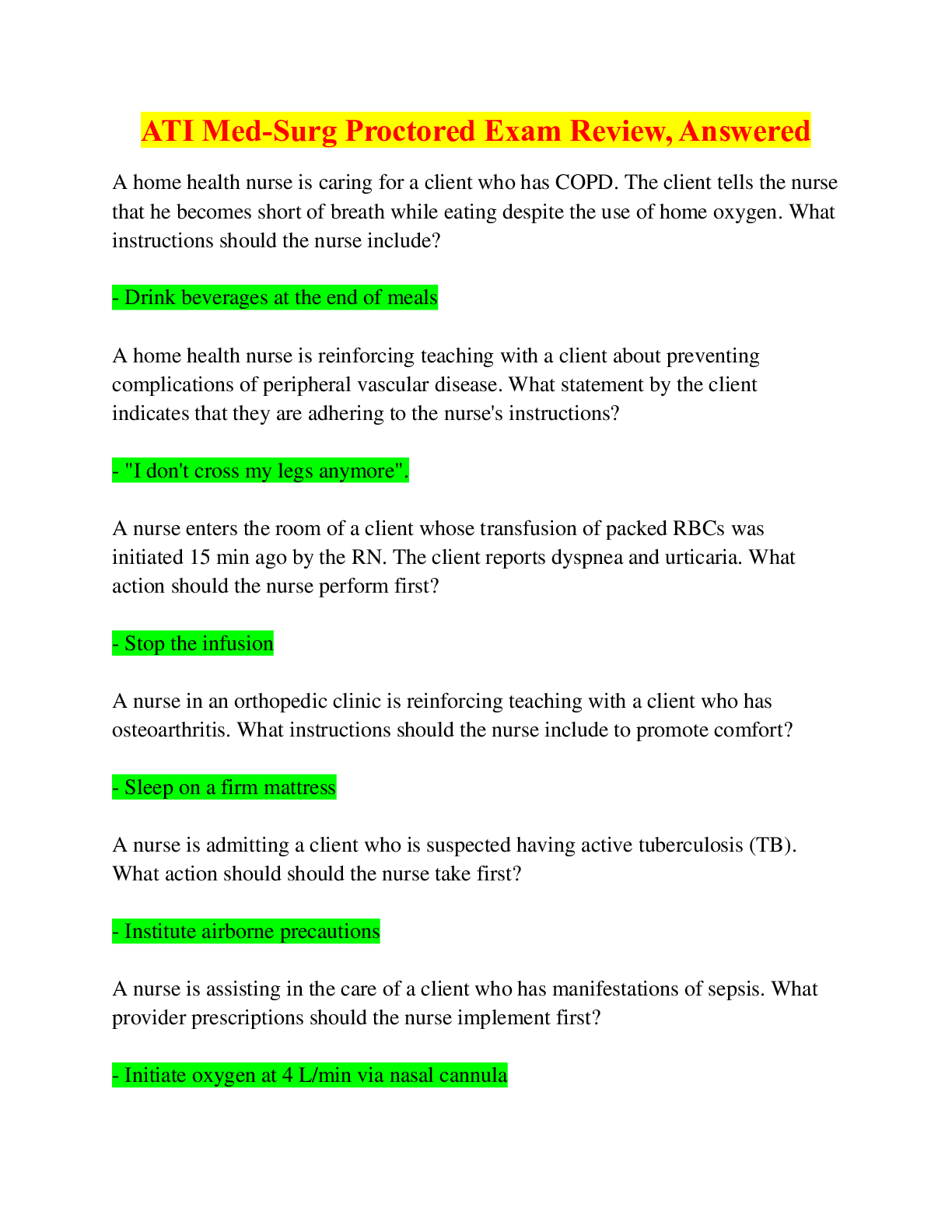
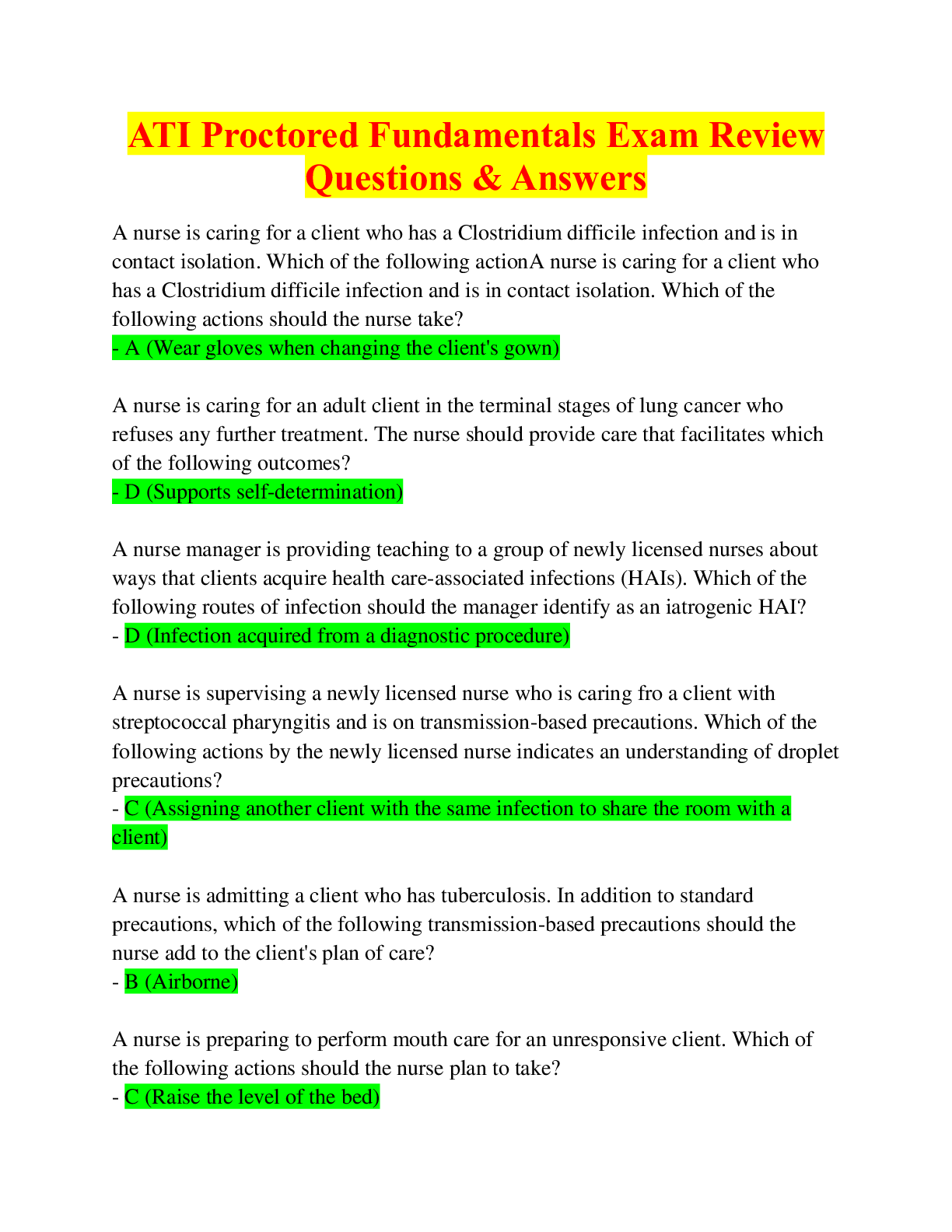
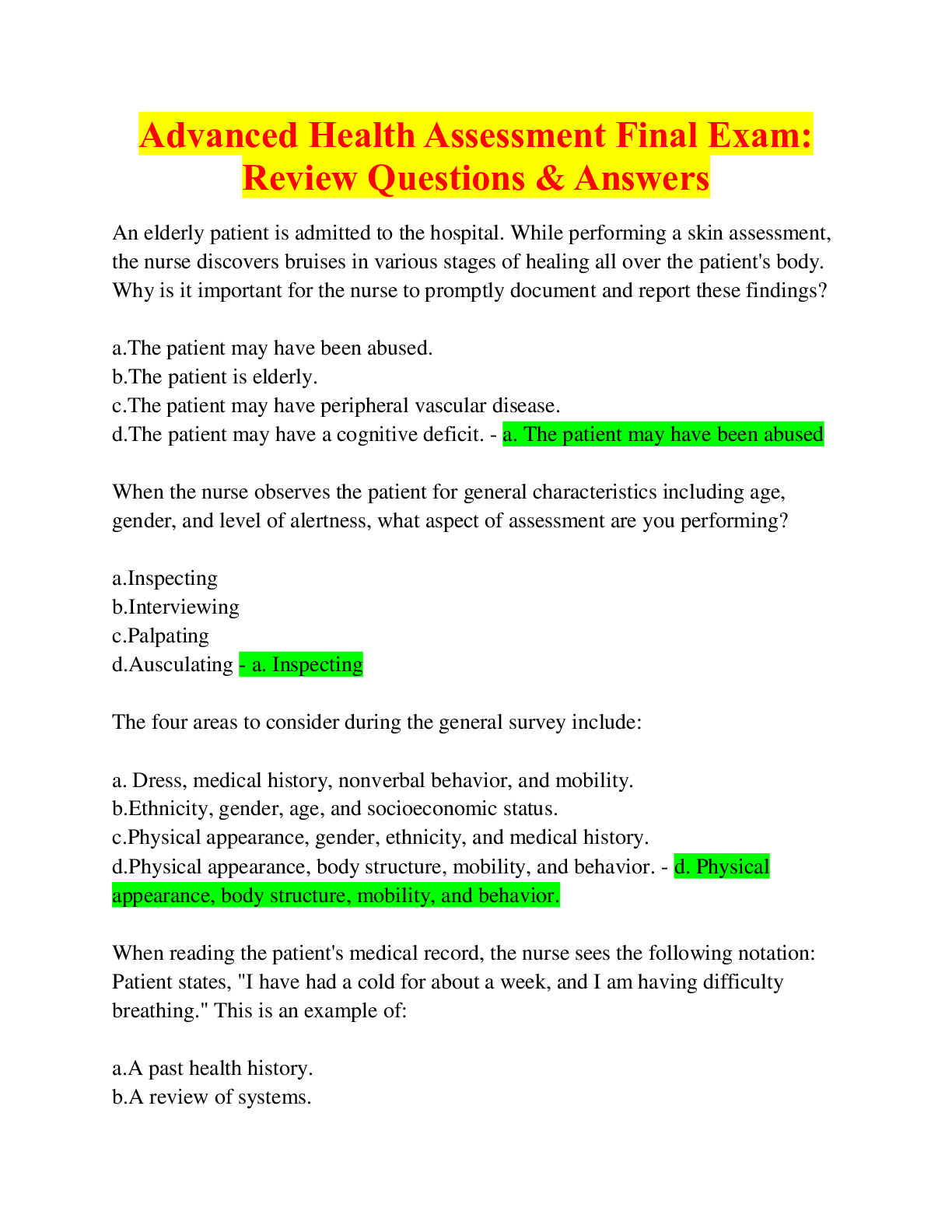








.png)









